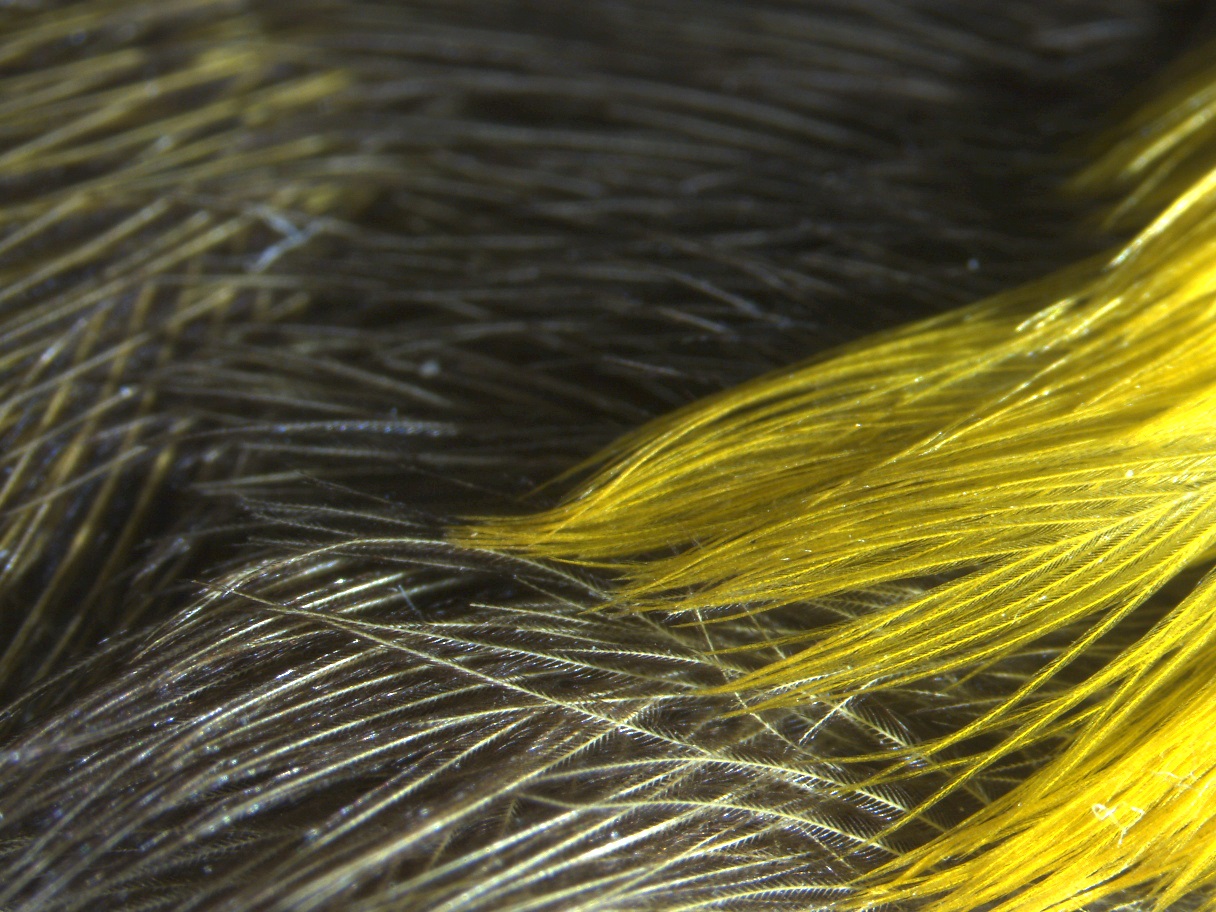“Dress to impress” and “Dress to survive”

Feather plumage in extreme close-up through the lens of a microscope. © LIB, N. Friedman
Our animal kingdom is colourful, and for those who look closely, it is apparent that the colours of fur, skin, or feathers often differ significantly in certain body regions. Some have a dark colour on their backs but a light belly, while others are uniformly coloured with only certain highlighted features such as their feet or beaks standing out. Of course, this phenomenon exists in the most vibrant creatures of the animal kingdom as well – birds. However, what functions explain the evolution of these colour patterns?
Section Head of Ornithology at the Leibniz Institute for the Analysis of Biodiversity (LIB), Dr Nicholas Friedman, has scientifically explored this question and summarized his findings in a study recently published in “The American Naturalist.” For this study, he examined over 200 different bird species, primarily honeyeaters in Australia, and closely examined the colours of their plumage. “We already know that animal often have colours that are adaptive in their surroundings. For this study, we collected various satellite images of the areas and compared them with the feathers of the birds found there,” Friedman explains.
To compare the birds systematically, the researchers used a device called a spectrometer to measure the colour of feathers on different parts of the birds’ bodies. Their previous studies had already suggested to them that the colour evolution of these body regions in birds seems to differ. For example, there was an indication that the colours of the wings evolved more slowly than those on the back or belly. “In this study, we wanted to investigate more precisely whether all regions evolve simultaneously or independently. And what we found is that colours on the back and wing feathers are primarily functioning as camouflage,” says Friedman.
Honeyeaters, in particular, often have brown wings, while various species also have yellow accents on their cheeks or breast feathers. While the colour of the back is strongly influenced by the bird’s habitat, it is challenging to identify a specific pattern in the coloration of the belly, which evolves different colours the fastest. “We assume that the colouration on birds’ ventral side, their breast and belly, has a function related to the birds’ display or courtship behaviour,” Friedman estimates. The results of this study help to understand even better, how much diversity evolved in the last 25 million years and why that is sometimes necessary to survive.
In future studies, Friedman would like to examine how the colour evolution differs between females and males as well as how common colour patterns evolve in birds.


